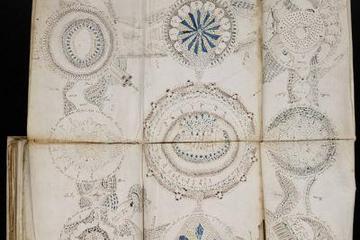Considéré comme un canular d’initiés datant de la renaissance, le manuscrit de Voynich trouve de nouveaux défenseurs parmi les linguistes :
Marcelo Montemurro, a physicist at the University of Manchester, and his colleague Damián Zanette didn’t exactly crack the Voynich code in their recent study published in the journal PLOS One. They did however find that “Voynichese” statistically adheres to linguistic rules.
Mainly, Montemurro and Zanette say the manuscript follows Zipf’s law, which holds that the most frequently occurring word in natural languages will appear about twice as much as the second most common word and three times as much as the third most common word and so on. Random symbolic sequences don’t show the same pattern as strongly, the researchers say.
“While the mystery of origins and meaning of the text still remain to be solved, the accumulated evidence about organization at different levels, limits severely the scope of the hoax hypothesis and suggests the presence of a genuine linguistic structure,” Montemurro and Zanette concluded.
Pour en savoir plus : Mysterious Voynich Manuscript Wasn’t a Hoax, Study Suggests | LiveScience.



